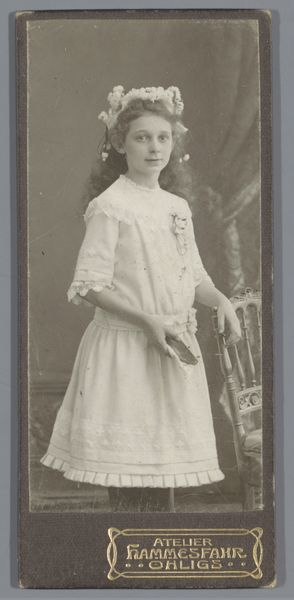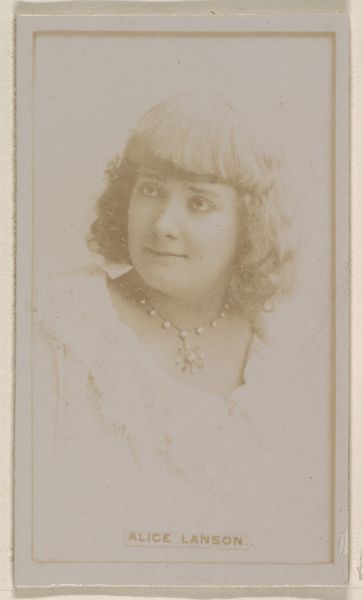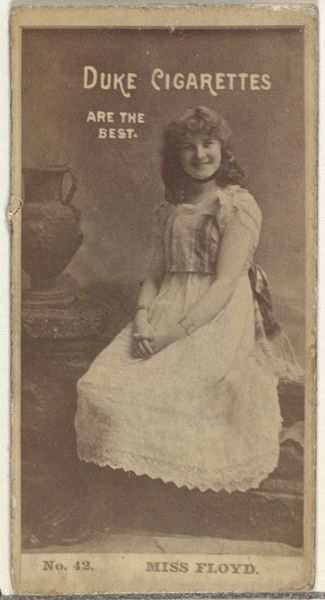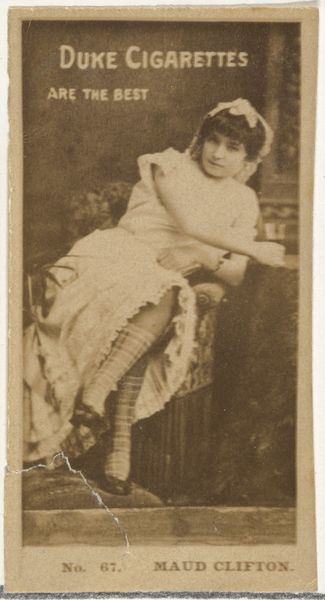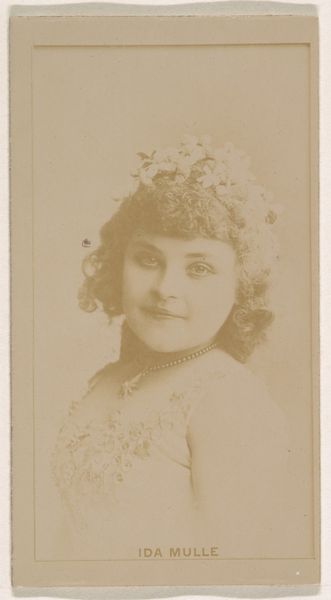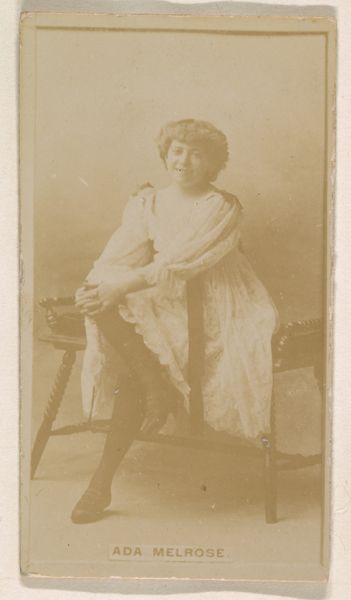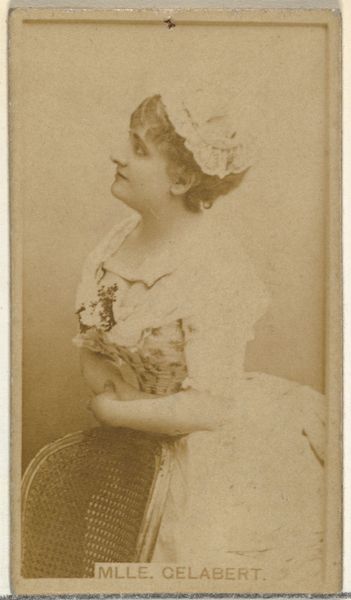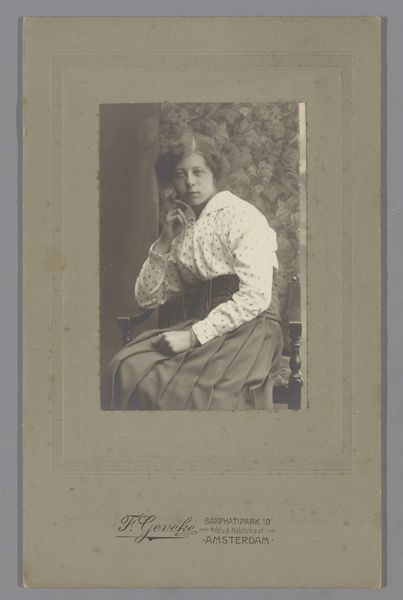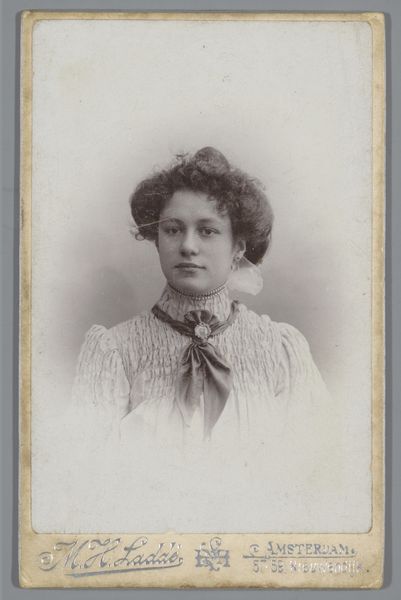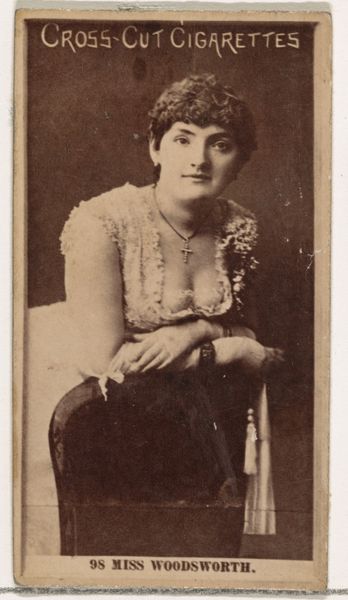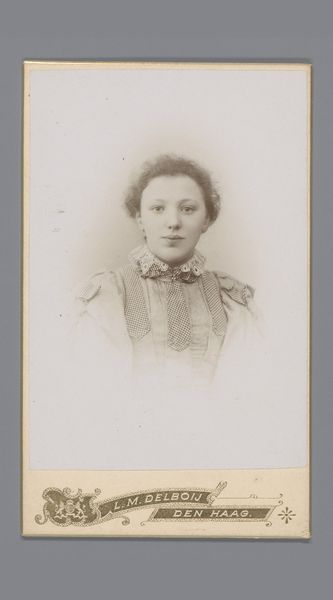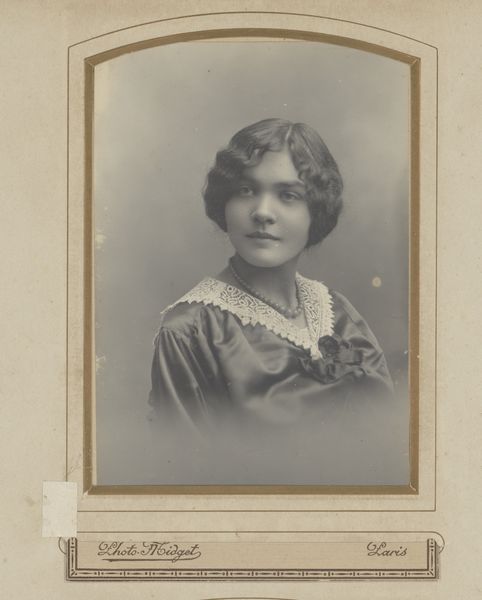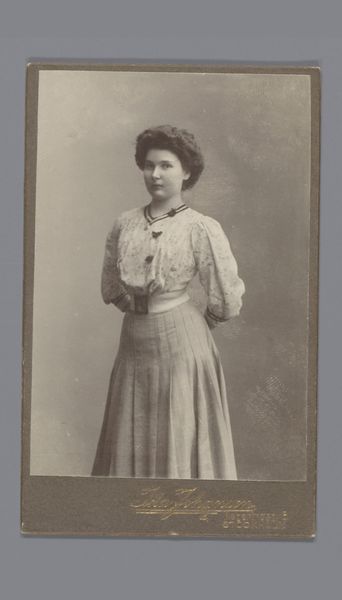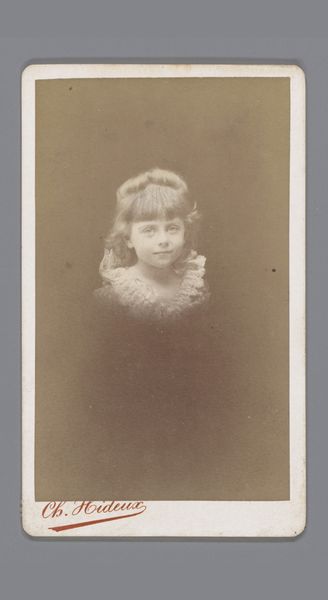
Studioportret van een onbekend meisje in (vermoedelijk) haar communiejurk c. 1880 - 1900
0:00
0:00
photography, gelatin-silver-print
#
portrait
#
photography
#
gelatin-silver-print
Dimensions: height 142 mm, width 100 mm
Copyright: Rijks Museum: Open Domain
Curator: This portrait, believed to be created sometime between 1880 and 1900, is titled "Studioportret van een onbekend meisje in (vermoedelijk) haar communiejurk"—"Studio portrait of an unknown girl in (presumably) her communion dress". The gelatin-silver print is the work of Jacobus Reesinck. It projects such a strange stillness. What catches your eye? Editor: Immediately, it’s the texture of the lace against the muted tones of the photographic paper. You can almost feel the starchiness of the dress, the slightly rough surface of the little stool. There's a real materiality here; this object existed. Curator: Absolutely. The dress, especially, is ripe with symbolic meaning. Communion dresses were designed to evoke innocence and purity, connecting young girls to centuries of religious tradition and virtue. Editor: And, looking at the construction – the puffed sleeves, the intricate lace – you realize the labor involved in making such a garment. It was likely hand-sewn, a tangible investment of time and skill by someone in this girl’s life. Was it a community effort to create a sacred and commemorative dress for a Catholic rite? How did this impact access? How would poorer families have navigated this ceremonial performance? Curator: Those are excellent questions, and raise interesting points about social hierarchy and wealth. The photographic process itself speaks to class, doesn’t it? Portraiture, especially in the late 19th century, offered a new, more accessible form of memorialization than painting, even while remaining largely out of reach for the working classes. Reesinck’s studio locations—Zutphen, Deventer—situated his practice within urban centers. Editor: Yes, but think about the chemicals, the darkroom setup. Creating a gelatin-silver print was hardly simple. There's a real alchemy in it. And while photography offered more people than ever access to visual art, these artisans' mastery was still important. Their labor and their resources went into creating this cultural product, right alongside the work of those that labored over clothing. Curator: Seeing how these intertwined crafts made possible this young woman's image solidifies its place in a moment. It speaks volumes, even without knowing the girl's identity. Editor: Indeed. It’s a reminder that art is so deeply tied to material processes and the broader social landscape. Even what appears like a humble family keepsake conceals those traces.
Comments
No comments
Be the first to comment and join the conversation on the ultimate creative platform.
